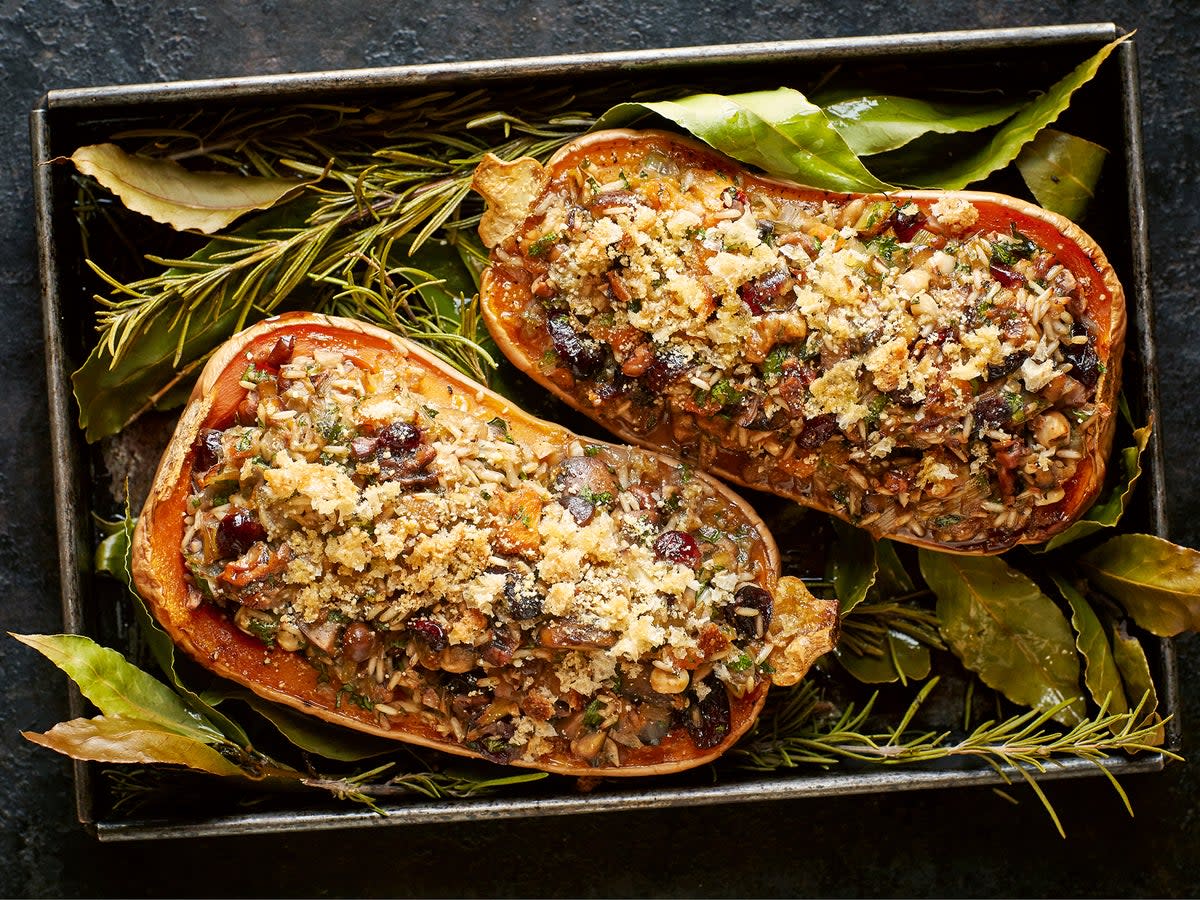8 pro tips for tasty and healthy plant-based meals

Whether you’re looking to reduce your reliance on animal-derived food, cut down on saturated fats, decrease your carbon footprint, or all of the above – embracing plant-based cookery doesn’t mean you have to go 100 per cent vegan if you don’t want to.
“It’s meant to be enjoyable – it’s not meant to be about taking stuff away,” says Annie Rigg, whose latest cookbook, Eat More Vegan, isn’t aimed solely at those who have given up meat and dairy products altogether.
“It’s written from the standpoint of someone who’s not vegan as well,” says Rigg, 52, who trained at the prestigious Leith’s Cookery School and worked as a chef for eight years before becoming a freelance food writer and stylist.
“I’d like to think I’m not preaching about it. It’s like: here is a really great collection of recipes, that just actually happen to be vegan.”
The author of more than 20 recipe books lives in Hampshire with her husband Hugh, who was pleasantly surprised by how much he enjoyed sampling the many plant-focused dishes.
“My husband – who is very long-suffering – has also embraced eating more vegan food, because I do all the cooking,” Rigg says. “He was completely overwhelmed by the jackfruit bao buns. He said, ‘You would never know they weren’t pork’.”
Now, Rigg is full of fantastic advice for anyone starting out on their plant-based journey or looking to elevate their vegan cookery game. These are some of her top tips:
1. Think veg-first
If you’re used to the classic meat and two veg combo, Rigg recommends an all-inclusive approach that makes vegetables the main event.
“With vegan food, the way I approach it is everything is the hero, rather than having one thing on the plate that’s the hero and everything else is sort of a support act,” she says. “It’s all-inclusive cooking.”
Using a mixture of veg – for example, Rigg’s rice and lentils with tahini-roasted root veg features carrots, parsnips and beetroot – creates a colourful, satisfying meal.
2. Grains are great
“They’re cheap and nutritious, and there are a million different things you can do with them – you open up a whole world of joy,” Rigg says of grains, such as quinoa, freekeh and spelt, which add flavour and texture to dishes as well as making them nutritious and filling.
Take pearl barley, for example – found in her mushroom, celeriac and pearl barley stew. “It’s just so delicious, and nutty and earthy,” says Rigg. “You can chuck grains into soups, stews and pies.”
3. Spice up your life
Rigg says: “I think there are other cuisines that lend themselves naturally to vegan – there are a number of Indian or other Southeast Asian-based recipes in the book.”
She recommends stocking up on a few fragrant spices, such as chaat masala (a powdered blend that includes cumin, coriander and fennel seeds), or making your own.
“It’s a really easy way to brighten up something quite simple, such as fried rice. Chuck on a seasoning blend and suddenly it’s not just rice and vegetables, it’s got flavour bombs all over it.”
4. Season generously
In addition to spices, herbs are a key component in flavourful vegan meals.
“I put bay leaves in a lot of things,” says Rigg. “In the summer, I use quite a lot of basil and oregano, flat-leaf parsley and chives. Currently, we have pots of thyme, rosemary and sage outside, and they are regularly trimmed.”
5. Don’t rely on meat substitutes
While there are plenty of convincing vegan meat alternatives on the market, Rigg prefers the plant-focused approach, although she is a big fan of tofu.
“I think a lot of the people who aren’t vegan or vegetarian shy away from tofu, but if it’s cooked well and properly, it can be the most delicious thing,” she says.
“Marinading it is often a good way. Frying it is always a good thing, because you’re then adding a texture to the outside of it – deep-fried tofu puffs are another option.”
6. Make your own mayo
Another brilliant use for tofu? Whip up tasty vegan mayonnaise and other salad dressings.
“You just buy the silken tofu and blend it. It takes on the texture of mayonnaise and then you can add any other flavours to it,” Rigg explains.
“You can add garlic and lemon and herbs. There’s a caesar salad dressing I did, which is whizzed up tofu and nutritional yeast – there’s no eggs or cheese.”
7. Try vegan cheese
While experimenting with vegan cheese, Rigg found the dairy-free alternatives have come on leaps and bounds in recent years.
“I found vegan feta very good, and some vegan parmesan is amazing,” she says. “The supermarkets are obviously doing it, but there are lots of people making small-batch vegan cheese, they’re really worth looking into.”
8. Enjoy it
Rigg’s advice for anyone who thinks they’ve failed if they happen to fancy a slice of toast smothered in butter, or a milky latte?
“Don’t beat yourself up,” she says. “If you start thinking about it as, ‘I’m depriving myself of something’, that’s when it will be a struggle.
“I don’t think it should be something that is about depriving. It should be about just opening up new doors for you.”
‘Eat More Vegan’ by Annie Rigg (Pavilion Books, £16.99; photography by Nassima Rothacker), available now.


